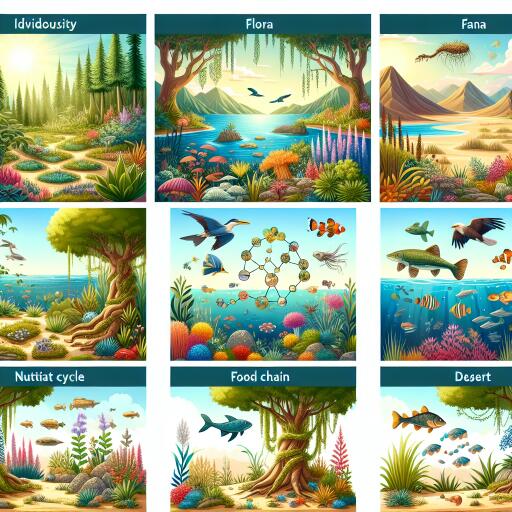
Biodiversity and Ecosystem Functioning: What Diversity? Which Functioning?
Our planet is a bastion of life, hosting an estimated 8.7 million species of eukaryotes, alongside a vast, uncharted realm of bacterial and archaeal forms. Yet, this incredible diversity stands on the precipice, endangered by human activities such as overexploitation, habitat destruction, and the looming threat of climate change. Such dire circumstances have galvanized ecologists into exploring the ramifications of dwindling biodiversity, seeking to understand precisely how the loss of species impacts the world around us.
Three decades of diligent research have ushered us to a critical consensus: biodiversity harbors enumerable benefits. Ecosystems rich in species not only boast higher productivity but also demonstrate enhanced stability. Traditionally, these investigations have centered on species-level diversity in ecosystems that are relatively lacking in species richness, quantifying diversity merely by tallying species without regard to their identity or relative abundance.
Embracing the leaps in modern sequencing technologies, this exploration takes a pioneering step by delving into the mega-diverse communities of bacteria to elucidate the nuances of biodiversity. This investigation unfolds across four illuminating chapters, each challenging and contributing to the discourse on biodiversity and ecosystem functionality.
The initial chapter reveals a remarkable resilience within bacterial freshwater communities, as they maintain ecosystem functionality despite significant reductions in diversity. This finding aligns with a broader literature review showing that only a quarter of experimental manipulations report a positive link between bacterial diversity and ecosystem functioning.
Moving on to the dynamics of habitat diversity, an experiment leveraging shallow bay sediment habitats as models showcases that both habitat diversity and bacterial diversity, contingent on the season, can amplify ecosystem functioning. This highlights the complex interplay between the diversity of life forms and their living spaces in enhancing ecosystem performance.
The third chapter pivots to marine environments, examining how the diversity of microbial denitrifiers relates to nitrogen fixation rates in natural sediments. Surprisingly, no direct correlation between microbial diversity and nitrogen fixation rates is observed, nor could other community metrics, including the diversity of the general bacterial community or the abundance of specific species, be linked to nitrogen fixation.
Addressing the ‘functioning’ dimension in biodiversity and ecosystem functioning research, the narrative paints a fascinating, albeit counterintuitive, picture. The prevailing logic suggests that since different species perform varied functions, a broader spectrum of species is essential for supporting multiple ecosystem functions simultaneously. However, this investigation challenges that notion, demonstrating that the incorporation of multiple functions does not inherently alter the biodiversity-ecosystem functioning relationship.
This comprehensive thesis casts doubt over some of the sweeping statements previously made in the biodiversity and ecosystem functioning discourse. Specifically, it underscores that the mere number of species in a system does not directly correlate to its functioning—especially within highly diverse ecosystems. Thus, the notion that any loss of species unequivocally leads to a decline in ecosystem functionality is debunked. Moreover, the examination of multiple ecosystem functions simultaneously does not alter this conclusion.
Notwithstanding these findings, the imperative to preserve biodiversity remains undiminished. The reckless alteration of natural landscapes without comprehending the potential consequences is both irresponsible and myopic. Given the inevitability of human impact, it is imperative that we arm ourselves with the most robust and accurate scientific knowledge available. Ecological research stands as a pillar in building this critical knowledge base, demanding rigorous and meticulous investigation to guide evidence-based and informed decision-making. Through this thesis, we take incremental but meaningful steps towards enhancing our understanding of biodiversity and ecosystem functionality, paving the way for more sustainable interactions with our natural world.
In conclusion, as we navigate through the Anthropocene, the era defined by significant human influence on Earth’s geology and ecosystems, the need for an in-depth understanding of the intricate links between biodiversity and ecosystem functioning has never been more critical. This body of work contributes to that understanding, urging a continued and deepened exploration into the symbiotic relationship between the diversity of life and the health of our planet.





Leave a Reply